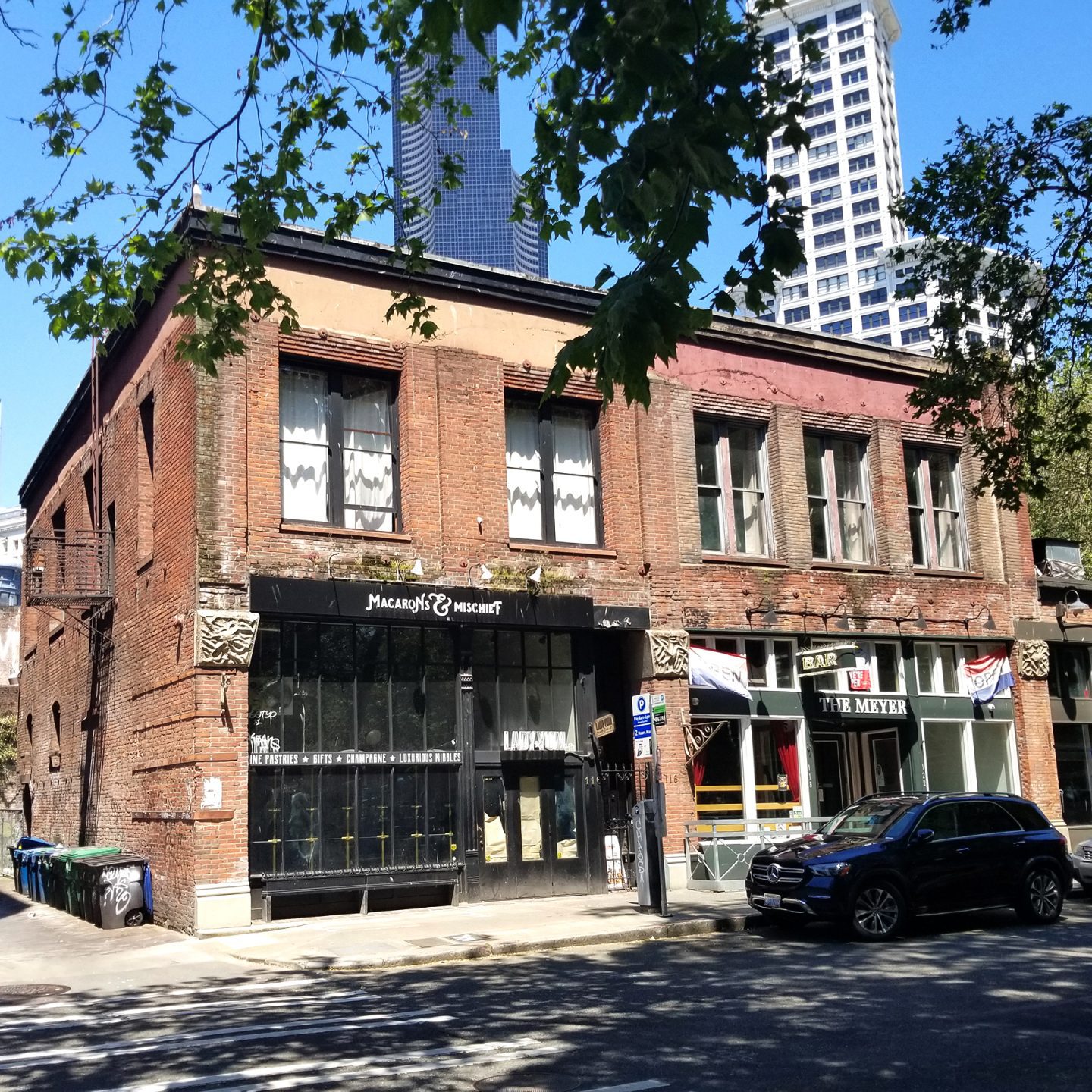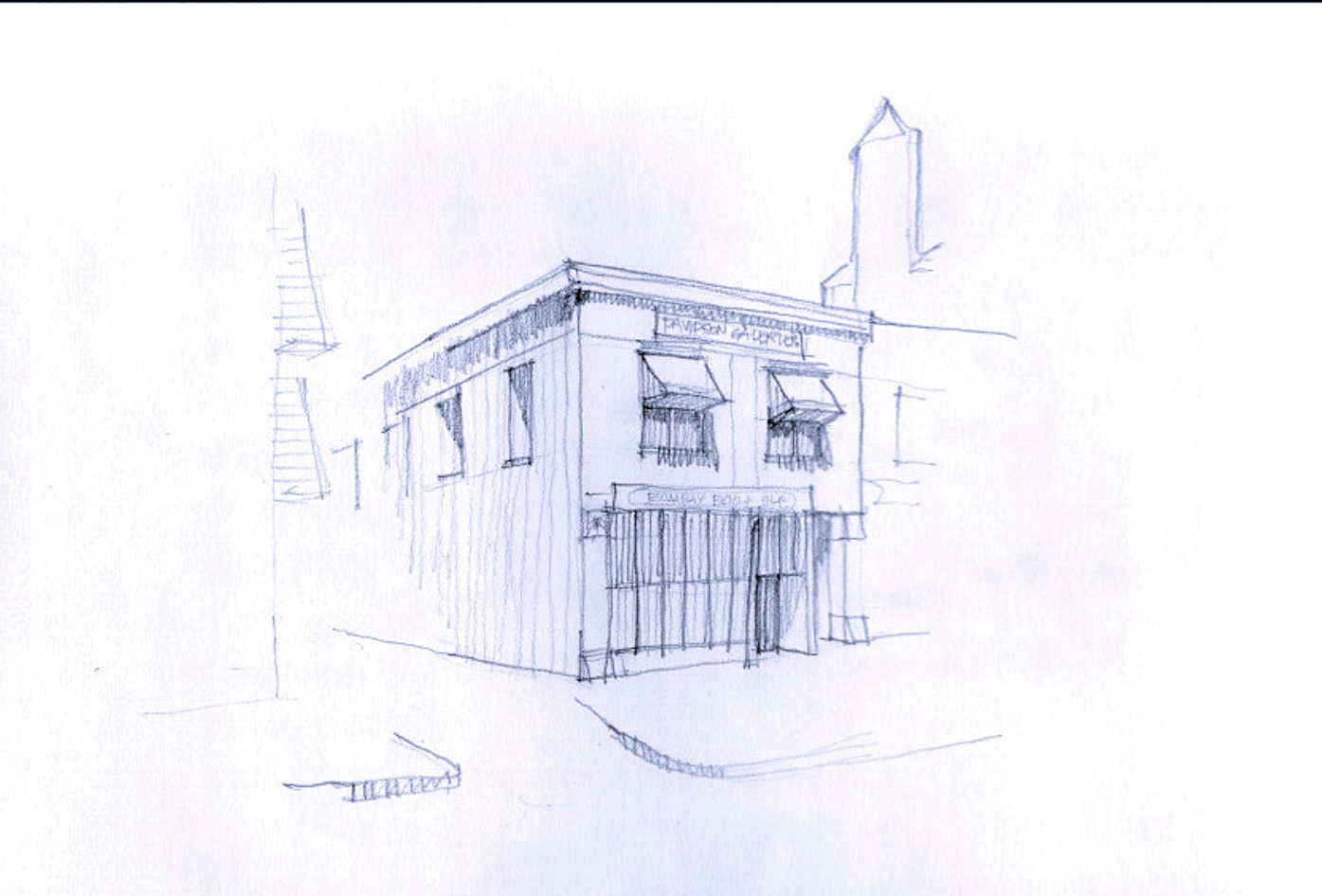-
Bombay Bicycle Shop
116 S Washington Street
In 1973 the Occidental Tavern was bought by business partners Dr. Carl Allen and Ed Neff. They stripped the place to the studs and hired architect Jim Daly to design the new look. Their concept was to create a comfortable 100-person-capacity jazz nightspot with an East Indian theme. The décor was largely antiques, along with a mural depicting a man riding a high-wheel bike, plenty of potted plants, a balcony hovered in the back area, and a new stage platform set in front of the dance floor before floor-to-ceiling plate-glass windows.
By 1974 the restaurant was offering live jazz as well as other forms of music. Among the early acts were the A. T. M. Blues Band, Cozzetti-Gemmill Quartet, Jean Hoffman, the Innercity Jazz Trio, Paramount, Pyramid, the R&B act Sugar ‘n’ Sweet, jazz-rock by the Vibrations, and the Steve Wolf Trio. From the beginning quality music was the goal, as Neff told The Seattle Times in 1975: “There’s so much great talent around here. We’re trying to establish a good night spot for people to hear this talent at a reasonable price. We’ve tried to build everything around the music.”
By 1975 the room had evolved into the local center of a popular new trend: Latin jazz and Afro-Cuban rhythm-centric bands, including Seattle’s own Dumi & the Minanzi Marimba Ensemble, Felicidades, Papaya, Tropical Rainstorm, and the Sundance Rhythm Band – as well as Olympia’s Obrador and the Portland-based Latin-fusion jazz-funk group Upepo. In April 1976 the room became the new home of the Seattle Jazz Society’s Sunday jam sessions with shows by local stars Pete Lienonen, Bill Smith, and Jabo Ward. By 1978 reggae was introduced here by Seattle’s Caribbean Superstars. The good times ended in early 1979, and by 1981 the site was home to a Greek restaurant, Estoa.

